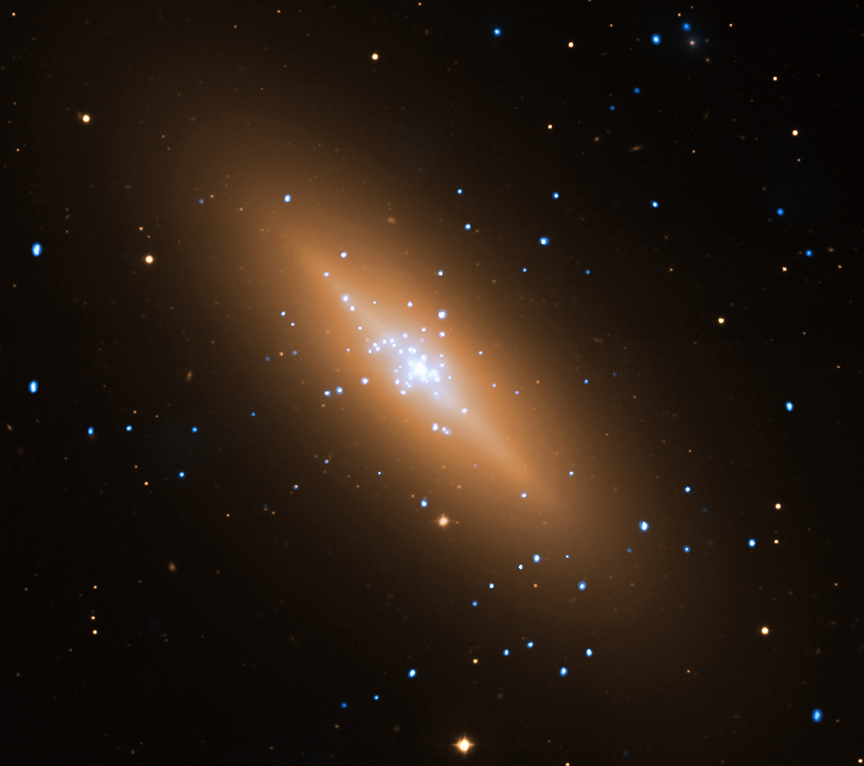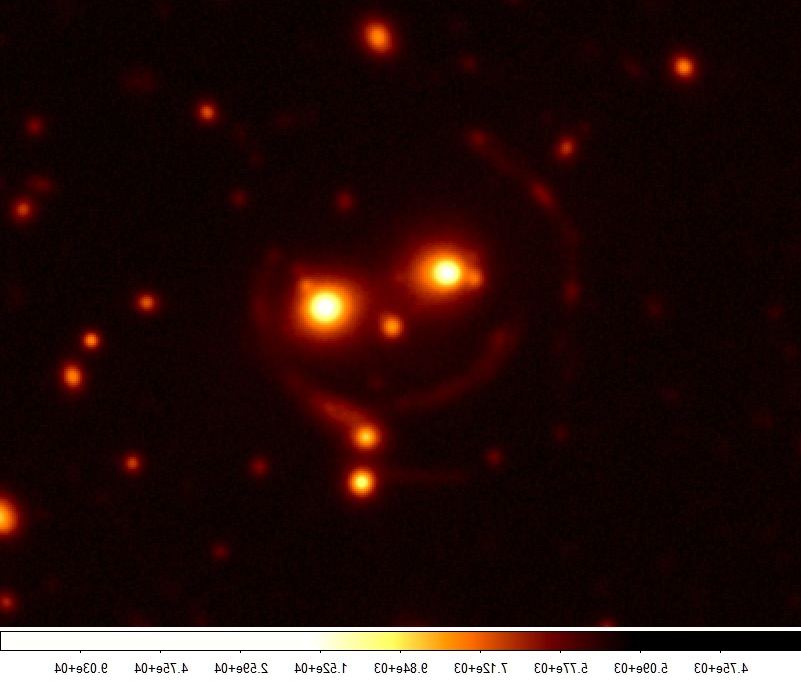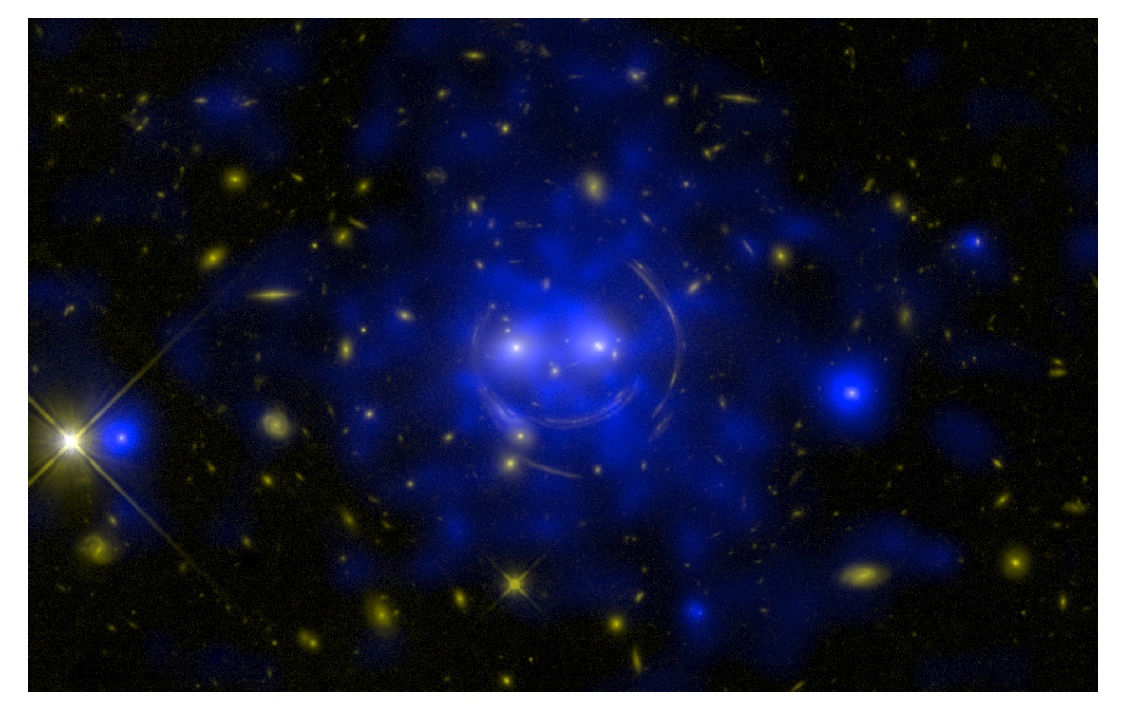Jimmy Irwin

Assistant Professor
Contact
(205) 348-3791
jairwin@ua.edu
Office: 311B Gallalee Hall
Fax: (205) 348-5050
Department of Physics & Astronomy, University of Alabama, Box 870324, Tuscaloosa, AL 35487-0324
Current and Recent Research Projects
The Flow of Gas Within the Bondi Radius of a Supermassive Black Hole:
The key to understanding the dynamics of ambient gas being gravitationally captured by a supermassive
black hole lies in correctly modeling the behavior of the accreting gas once it falls
within the gravitational influence of the black hole, the
Bondi radius RB = 2GMBH/cs2, where MBH is the
mass of the black hole and cs is the sound speed
of the gas in the vicinity of RB. In the absence of angular momentum, the black hole is predicted
to gravitationally capture the ambient ISM surrounding it at a rate
ṀBondi =4πλ (GMBH)2 ρ cs-3, where
λ=0.25 for an adiabatic process and &rho is the density of
the gas at RB.
For observed central
&rho values of many nearby elliptical galaxies or Sgr A*, observed luminosities are orders of magnitude
smaller than what would be predicted based on the Bondi accretion rate and assuming a standard
10% radiative efficiency. These observational results imply that the
radiative efficiency of the infalling gas is exceedingly low and/or that much less material is accreted
by the black hole than the Bondi formula implies, prompting the development of a host of
theoretical efforts to explain the very low radiative efficiencies and/or accretion rates (such as
ADAF, CDAF, and ADIOS models).
Determining which (if any!) of these scenarios describes low-LX black hole systems is of fundamental
importance to our understanding of accretion physics and black hole demography.
While ADAFs, CDAFs, and ADIOS models all predict that
the compression of gas within the accretion flow within the Bondi radius leads to a T(R) ∝ R-1
relation for the gas, the models predict significantly different radial density profiles. Thus, the density
profile of hot gas flowing within RB provides a crucial constraint on which accretion flow model is
appropriate.
The list of galaxies that are close enough and that harbor a SMBH massive enough for the Bondi radius of the
black hole to be resolved with even Chandra is extremely short, and the best target is the S0 galaxy,
the closest galaxy that harbors a >109MSun black hole
(with a Bondi radius of 5", or 235 pc). We were awarded a 1 million second X-ray Visionary Project (XVP) Chandra observation
to derive the first temperature and density profile of hot gas inside the Bondi radius of a black hole.
The projected temperature jumps significantly from ~0.3 keV beyond 5' to ~0.7 keV within ~4"-5", but then abruptly drops back to ~0.3 keV within ~3".
This is contrary to the expectation that the temperature should rise toward the center for a radiatively inefficient accretion flow. A hotter thermal
component of ~1 keV inside 3" (~150 pc) is revealed using a two-component thermal model, with the cooler ~0.3 keV thermal component dominating the spectra.
We have argued that the softer emission comes from diffuse gas physically located within ~150 pc of the black hole. The density profile is broadly
consistent with ρ(R) ∝ R-1 within the Bondi radius for either the single temperature or the two-temperature model. The X-ray data along
with physical reasoning argue against the absence of a black hole, supporting that we are witnessing the onset of the gravitational influence of the supermassive black hole.

Chandra+VLT image of NGC3115.
Searching for Evidence for Intermediate-mass Black Holes (IMBHs) in Globular Clusters
from the Tidal Disruption of Passing Stars in the Cluster:
The establishment of the existence of black holes with masses in the 100--104
MSun
range would represent a major advancement in our understanding of the formation
of black holes and their relation to both star formation and galaxy formation.
While the mechanism for how IMBHs could be formed in the field of a galaxy is
well-known to be problematic, globular clusters provide a more natural environment
for IMBHs to form, and indeed a vigorous debate has been raging in the literature
over whether Galactic and M31 globular clusters exhibit the kinematic signs of
the presence of an IMBH.
If IMBHs exist within globular clusters, they would be expected to
occasionally tidally disrupt a passing star. Following the short-lived Eddington flare phase expected
from the accretion of shredded material onto the IMBH, a longer-lived phase characterized by diminished X-ray emission
and optical line emission from the X-ray-illumination of the stellar debris that remains around the
IMBH would be tell-tale signatures of a disruption event that occurred 10 to a few hundred years ago.
So rather than searching for the short-lived (and therefore rare) Eddington phase, my strategy has been
to target a large number of extragalactic globular clusters that harbor luminous X-ray sources, and search
for optical emission lines from these clusters. One prime candidate found for a post-tidal disruption
event is the X-ray source CXOJ033831.8-352604 in a globular cluster in the Fornax elliptical galaxy NGC1399.
With Magellan spectra, we found strong [N II] and [O III] forbidden emission lines emanating from
the cluster harboring this ultraluminous X-ray source (ULX).
The width of the lines and line ratios coupled with the high X-ray luminosity rule out other more
mundane explanations such as planetary nebula or supernova remnants as the source of the line emission,
leaving tidal disruption as the only viable explanation. Surprisingly, both Hα and
Hβ are missing from the spectrum, indicating that if this is X-ray-illuminated debris from
from a tidal disruption event, the disrupted object was severely lacking in hydrogen.
Our best-fit CLOUDY models predict the correct optical emission line ratios and X-ray luminosity
in a situation where a 100-200 MSun black hole has disrupted a 0.65 MSun hydrogen-poor
red clump star within the globular cluster (Clausen et al. 2012, MNRAS, 424, 1268). We have recently been awarded 10 orbit Hubble Space Telescope
COS observation of this globular cluster to search for the model-predicted carbon, oxygen, and nitrogen ultraviolet lines,
which will confirm or deny our tidal disruption model, and put good constraints on the mass of the black hole disruptor.

Chandra+HST/ACS image of the CXOJ033831.8-352604 in NGC1399 (bright point source in upper left).

Magellan/MaGe spectrum of the globular cluster harboring CXOJ033831.8-352604 showing strong, redshifted [O III] and [N II] emission lines (Irwin wt al. 2010, ApJ, 712, L1).
Identifying High Mass Concentrations on the Galaxy/Group Scale With Gravitational Lensing
:
Strong gravitational lensing of background galaxies
by foreground clusters/groups of galaxies
is a powerful tool for determining the mass of the intervening structure.
Until recently, the majority of strong lensing mass estimates have been for
clusters with masses on the order of 1015 MSun. This is beginning to
change as more data from the Sloan Digital Sky Survey (SDSS) emerges, and an
increasing number of lensing events from groups of galaxies are being
discovered. Lensing also provides an avenue for probing the high-mass
end of the galaxy mass function.
As the strength of lensing depends on
the mass of the lensing system, lens searches should be particularly adept at
finding lensing systems with high mass concentrations, such as fossil groups
of galaxies, individual galaxies with very massive dark matter halos, and if
we are lucky so-called "dark" clusters.
One such lensing discovery by the SDSS is the Cheshire
Cat gravitational lens.
This unusual system is composed of arcs from four separate background galaxies
lensed by two massive elliptical galaxies
and a collection of ~50 much fainter galaxies
(Δ m > 2 mag) at z=0.43. The massive
elliptical "eyes" of the Cat differ in velocity by 1350 km s-1, indicating
that we might be seeing two fossil groups merging nearly along the
line of sight. This was confirmed by our spectroscopic study of the ~50
galaxies surrounding the "eyes", for which we found a double-peaked velocity
distribution, with each peak centered on each of the "eyes"
The Chandra data for this system shows a
very strong temperature peak above 5 keV in the core of the otherwise symmetric
X-ray distribution, indicative of a shock, again consistent with a line of sight merger between two
fossil groups. This appears to be the first example of merging fossil groups
observed to date (a fossil group progenitor). We have begun a project to identify more examples
of fossil group progenitors by using strong gravitational lenses as an earmark for finding the
high mass concentrations indicative of both merging systems and fossil groups in general.


Gemini GMOS image of the Cheshire Cat gravitational lens (upper), and Hubble+Chandra contour image of the Cheshire Cat (lower).

Velocity distribution
of galaxies showing concentrations around both "eyes" at z=0.428 and z=0.433 determined from GMOS spectroscopy (Irwin et al. 2015, ApJ, 806, 268).






